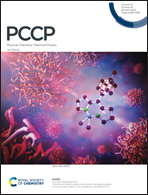Unravelling electron transfer in peptide-cation complexes: a model for mimicking redox centres in proteins†
Abstract
Metalloproteins are crucial to many biological processes, such as photosynthesis, respiration, and efficient electron transport. Zinc is the most common transition metal found in proteins and is critical for structure, function and stability, however the effects from the electronic properties of a bound zinc ion on electron transfer are not clearly defined. Here, a series of β-strand and 310-helical peptides, capable of binding Zn2+via suitably positioned His residues, was synthesized and their ability to undergo electron transfer in the presence and absence of Zn2+ studied by electrochemical and computational means. The β-strand peptide was shown to be conformationally pre-organized, with this geometry maintained on complexation with zinc. Electrochemical studies show a significant increase in charge transport, following binding of the zinc ion to the β-strand peptide. In contrast, complexation of zinc to the helical peptide disrupts the intramolecular hydrogen bonding network known to facilitate electron transfer and leads to a loss of secondary structure, resulting in a decrease in charge transfer. These experimental and computational studies reveal an interplay, which demonstrates that bound zinc enhances charge transfer by changing the electronic properties of the peptide, and not simply by influencing secondary structure.

- This article is part of the themed collection: 2020 PCCP HOT Articles


 Please wait while we load your content...
Please wait while we load your content...